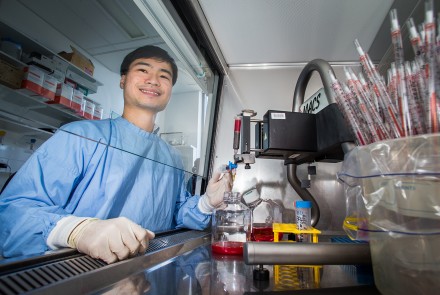Weakness in malaria parasite fats could see new treatments

A new study has revealed a weak spot in the complex life cycle of malaria, which could be exploited to prevent the spread of the deadly disease.
It found female malaria parasites put on fat differently to male ones.
“The study opens potential new ways to combat malaria,” said Associate Professor Alexander Maier, from the Research School of Biology.
“Malaria parasites show resistance to all current anti-malarial drugs. We are losing our weapons against this very important disease. But by studying lipid molecules – fats – rather than proteins or DNA we have opened a new avenue to develop drug treatments for malaria.”
More than half a million people die of malaria every year and 40 percent of the world’s population is at risk of contracting the disease.
The spread of malaria by mosquitoes is a surprisingly inefficient process. Nearly all the parasites ingested by a mosquito in a meal of infected red blood cells are killed by the mosquito’s digestive processes, and so are not passed on to other humans.
A tiny percentage survive – the one in 10,000 that have developed into a more sophisticated form of the malaria parasite, called gametocytes, which resist digestion and then breed inside the mosquito.
Associate Professor Maier’s team found that a molecule called gABCG2, which controls the transport of fat molecules, played a key role in this process.
“Female parasites build a deposit of fat in a localised spot, which is controlled by gABCG2,” Associate Professor Maier said.
“However, malaria genetically modified to have no gABCG2 did not accumulate fat in the same way, and crucially, struggled to survive in the mosquito.”
Co-researcher Dr Phuong Tran said that the discovery of the role of fats within the gametocyte could lead to new malaria drugs, based on current drugs that influence fat digestion, such as cholesterol reducers.
“If we can target the molecule gABCG2 and kill the females then we can stop the fertilisation, which will stop the development and transmission of the disease,” Dr Tran said.
“It may even lead to a vaccine for malaria.”
Advances in the study of fats within our cells have made this research possible, Associate Professor Maier said.
The research team included scientists from ANU, the University of Wollongong, University of Melbourne and the Max-Planck-Institute in Berlin.
 Follow
Follow